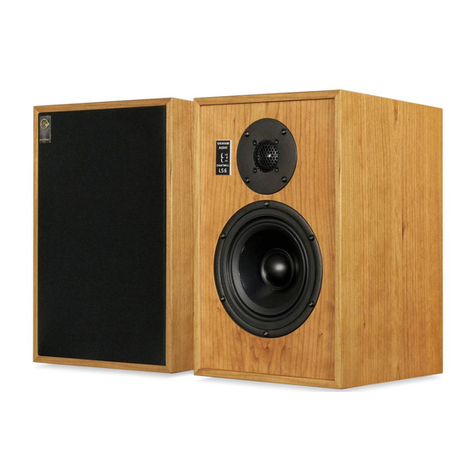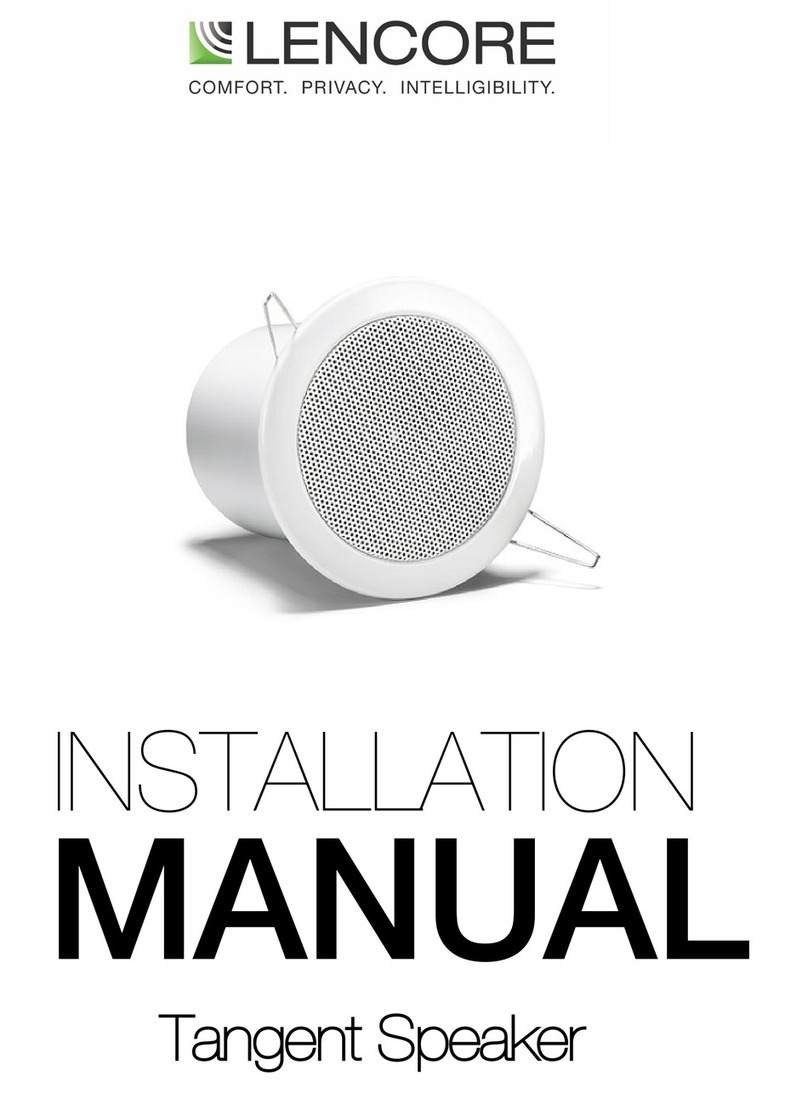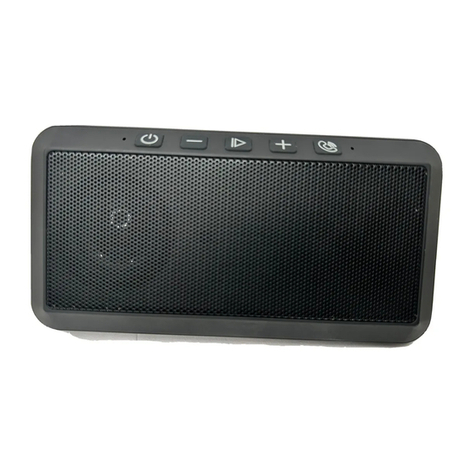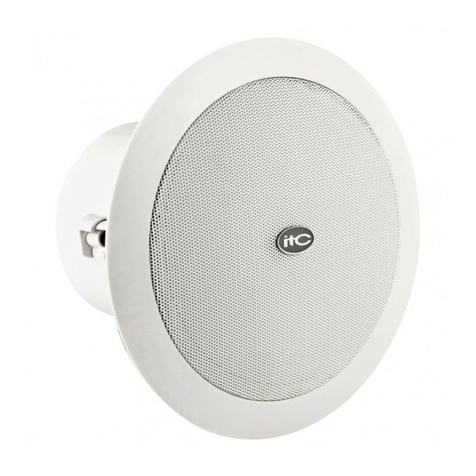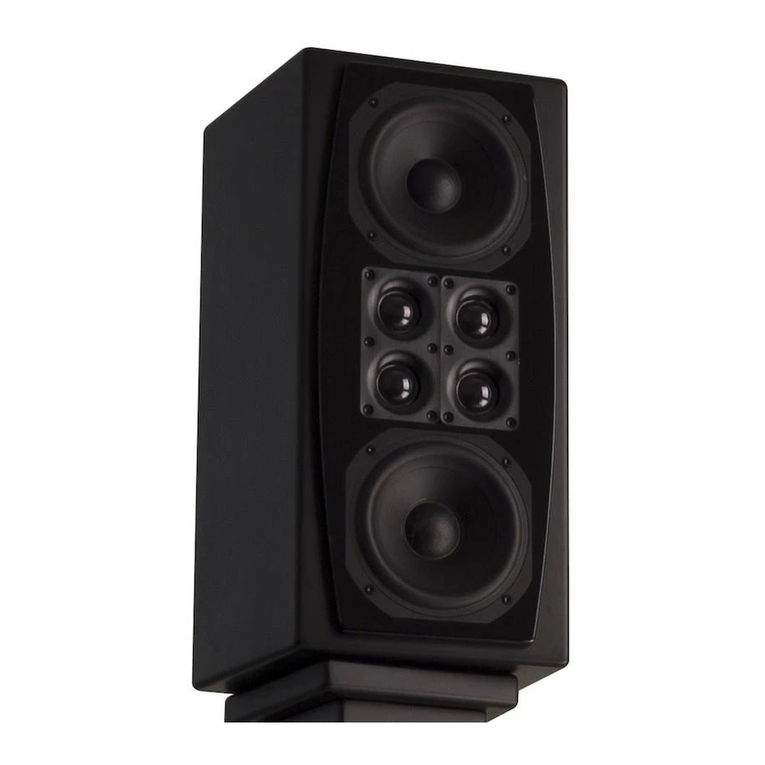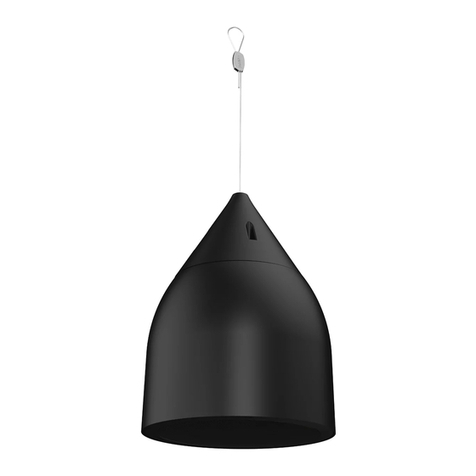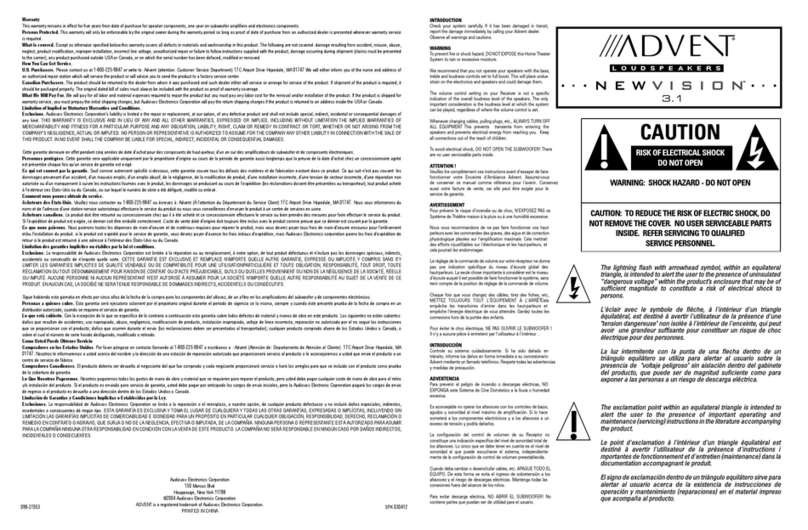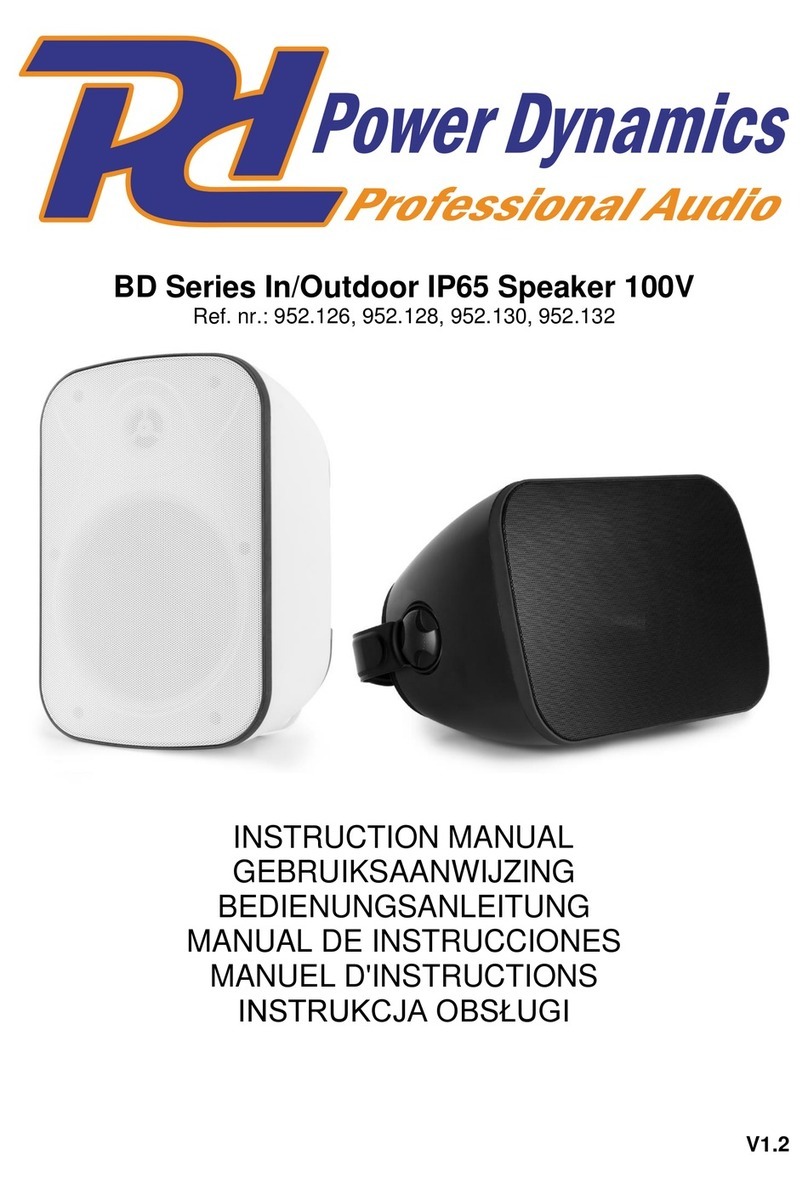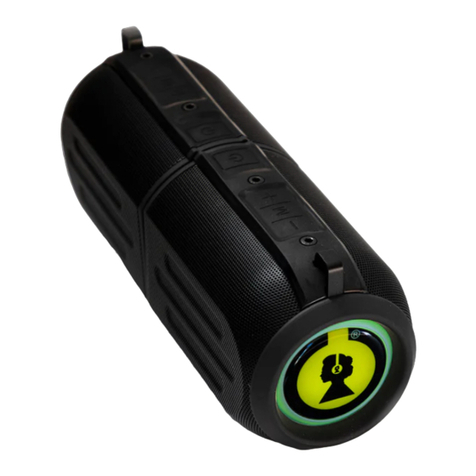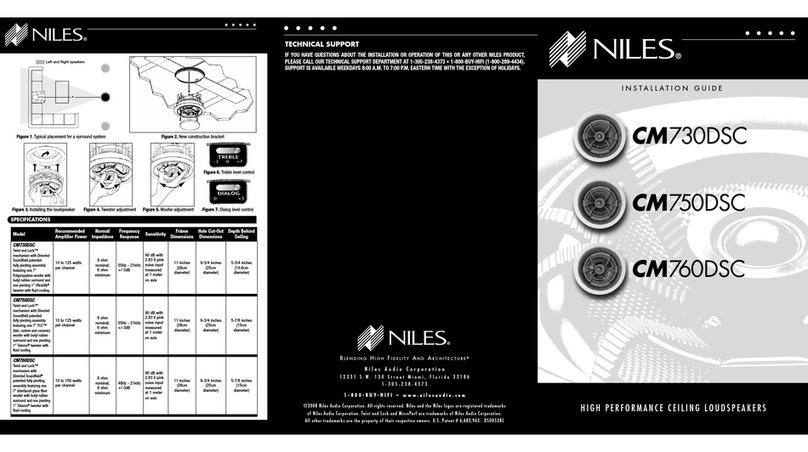Graham Audio LS3/5 User manual

Graham Audio Limited www.grahamaudio.co.uk 0044 (0)1626 361168
BBC Licensed Monitor Loudspeakers
Owner’s Manual
Thank you for purchasing this loudspeaker
system from Graham Audio, which was hand-
built using the finest materials according to
strict BBC specifications and used carefully,
will provide many years of listening
enjoyment.
Please spend a few minutes reading these
instructions before using your new
loudspeakers.
Positioning your loudspeakers
All BBC monitor loudspeakers are intended to
be mounted on stands that bring the tweeter
up to ear level. Graham Audio can supply
dedicated stands that are designed to work in
typical domestic environments; taller stands
for professional environments can be
produced to order.
Alternative stands can be used, provided they are rigid and non-resonant. Test metal stands with
hollow upright sections by rapping them with a knuckle, and consider filling them with dry sand or
similar to eliminate any ringing.
For safety reasons, please ensure that the top surface of the stand is of similar dimensions to the
loudspeaker. There are many options for the interface between the bottom of the loudspeaker and
the top of the stand, but many will damage the bottom of the loudspeaker –small pads of foam, felt
or cork can work well, as can small self-adhesive rubber feet. Between the bottom of the stand and
the floor, spikes are recommended for carpeted floors, and these must be carefully adjusted to
ensure the stand is absolutely stable. Periodically check the spikes as they can work loose. For
other floor types, spikes might not be appropriate –contact your dealer for advice.
As is normal, determining the optimum position for your loudspeakers in your listening room should
be the subject of some experimentation. As a starting point, try positioning them such that you and
the two loudspeakers form an equilateral triangle. If possible, try to keep them away from side
walls, as reflections from these might affect the stereo image. Remember also that the distance
between the loudspeakers and the rear wall will have an effect on the bass level and quality. In a
rectangular room, you can usually expect best results from pointing the loudspeakers across the
narrow dimension of the room, but every room is different, and there are no firm rules! The
loudspeakers should be angled in to face you, but again, this can be varied according to taste.
Nearly every listening room can be improved with acoustic treatment. A thick carpet (or large rug)
is recommended, as reflections from hard floors are always detrimental. Large expanses of bare
walls can be similarly problematic, and reflections from these can be treated with absorbent
materials or diffused with irregular surfaces such as bookcases. In professional environments,
acoustic treatment is the norm.

Graham Audio Limited www.grahamaudio.co.uk 0044 (0)1626 361168
Connecting your loudspeakers
Please ensure that the cables are long enough to be neatly dropped down behind the stand to
minimise the risk of them being pulled from the stand.
Always switch off the amplifier when connecting up the loudspeakers because some amplifiers can
be damaged by even a brief short circuit.
For best results, we recommend that you use stranded cable with a cross-sectional area of 2.5mm2
(the majority of “79-strand” cables should meet that specification). Remember that some specialist
loudspeaker cables can have unusual electrical characteristics that adversely affect the operation
of some amplifier-loudspeaker combinations, so seek advice from your dealer if in any doubt.
There is a single pair of terminals on the rear of each loudspeaker which accept bare wire, spade
connectors, or 4mm plugs. The latter is recommended for convenience and connection quality.
The terminals are colour-coded red and black, and it is essential that for each loudspeaker the red
terminal of your amplifier connects to the red terminal of the loudspeaker, and likewise for the black
terminals. If the bass seems weak, and/or the stereo image is indistinct, check that both
loudspeakers are connected to the amplifier with the same polarity.
Listening recommendations
Your Graham Audio loudspeakers are extremely revealing of problems in the preceding audio
chain, and should be partnered with high quality equipment. In particular, low powered amplifiers
driven into clipping will sound especially poor with any high quality monitor loudspeaker.
Loudspeaker
Recommend minimum amplifier power
Maximum recommended power
LS3/5
25 watts
50 watts
LS5/9
50 watts
150 watts
LS5/8
50 watts
250 watts
The lower figures might be suitable for domestic use in a small room, but in larger areas –or for
professional use –more powerful amplifiers will be required. Please note that these numbers can
only be an approximate guide.
The loudspeakers were voiced with the grilles in place and it is recommended that the grilles be left
on at all times. The grilles are retained using hidden neodymium magnets and can be readily
removed if desired.
Behind the grilles of the LS5/8 and LS5/9 is a tweeter level adjustment facility which is designed to
account for minor variations in sensitivity between the two drive units. This has been set at the
factory, and will not need adjusting during the life of the loudspeaker. Do not attempt to alter this
setting yourself.
Caring for your loudspeakers
Retain all packing materials for future use. The natural wood veneer should be cleaned regularly
with a soft clean cloth. Avoid wax-based furniture polishes and all forms of solvents. Remove the
grille before cleaning the cloth with a soft brush, and replace to keep dust out - avoid touching the
diaphragms of the drive units. Like any wooden item, the loudspeakers should be placed in a dry
environment, away from sources of heat and out of direct sunlight.
This manual suits for next models
2
Table of contents
Other Graham Audio Speakers manuals


